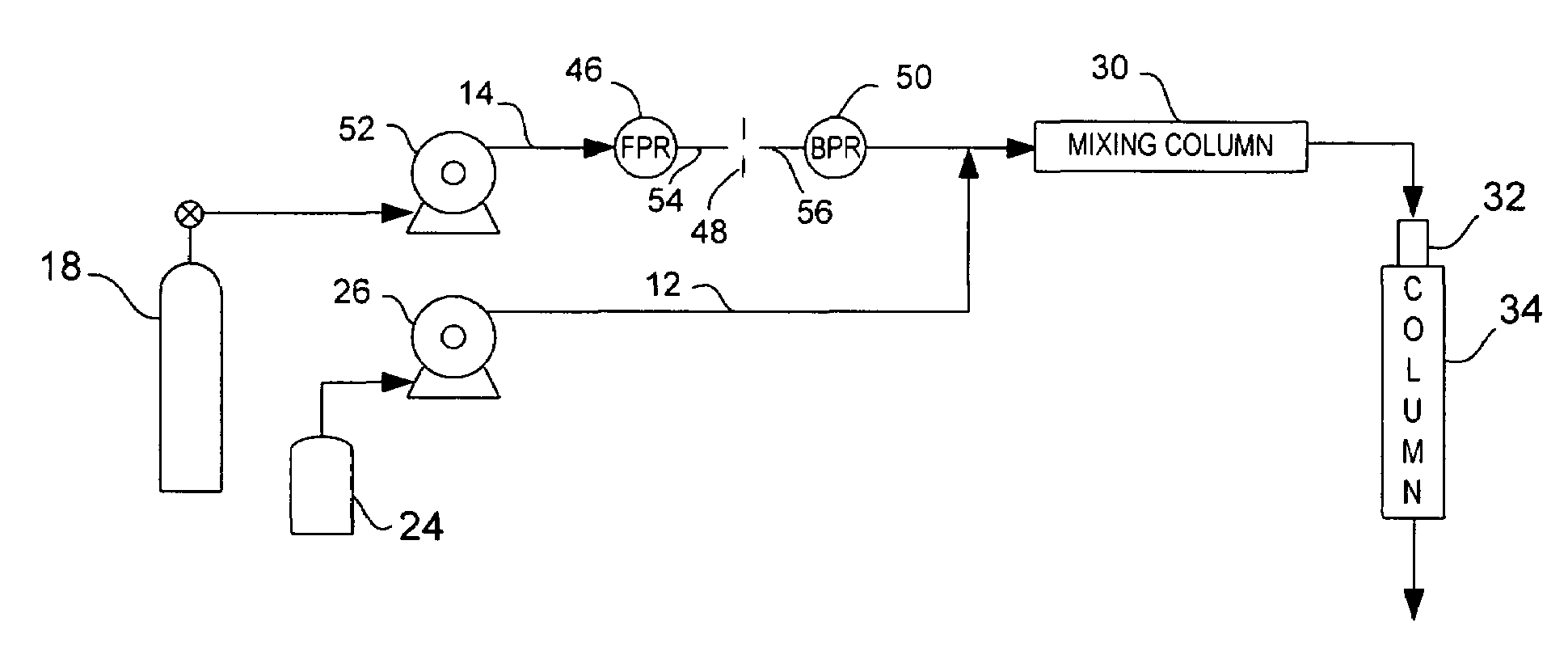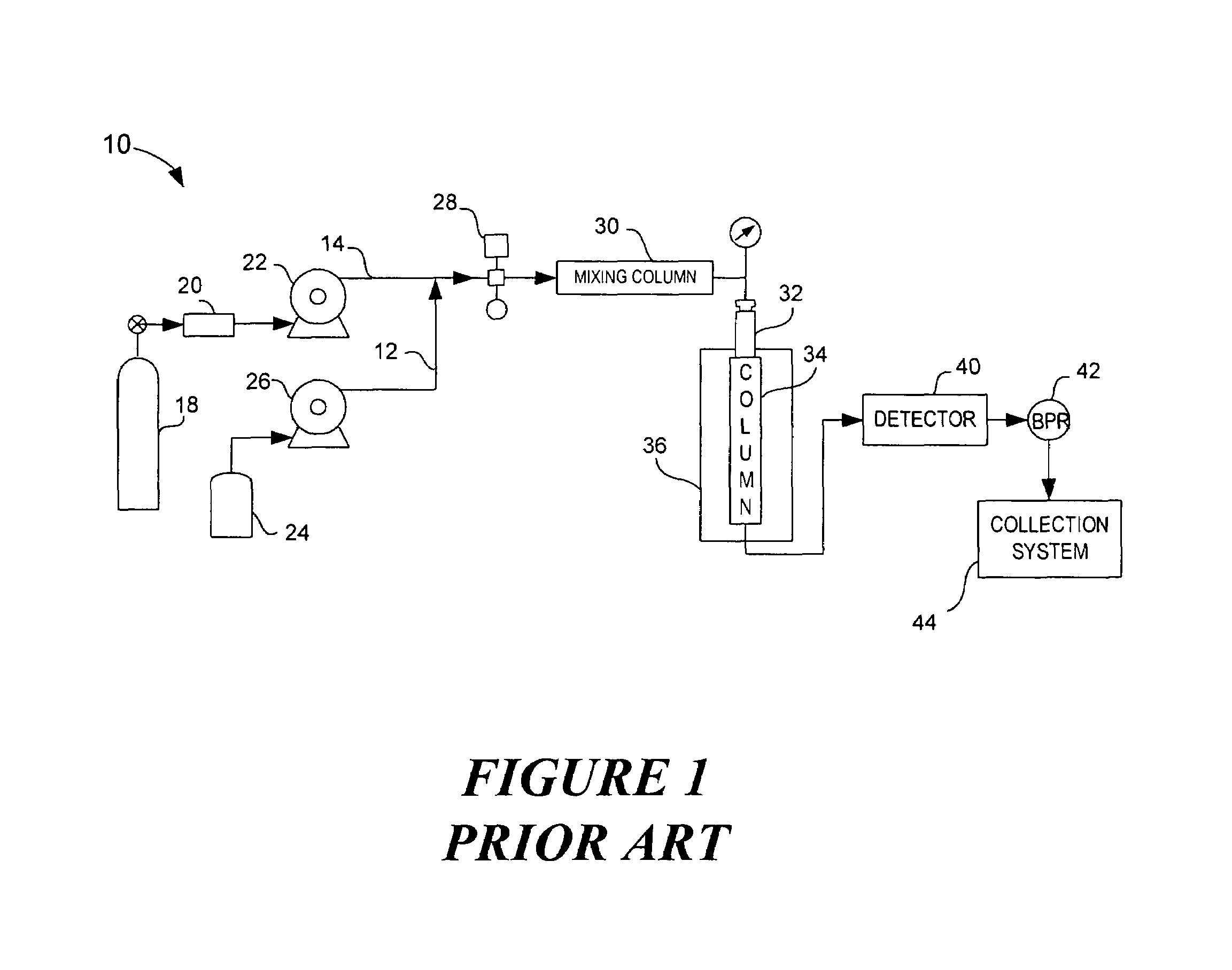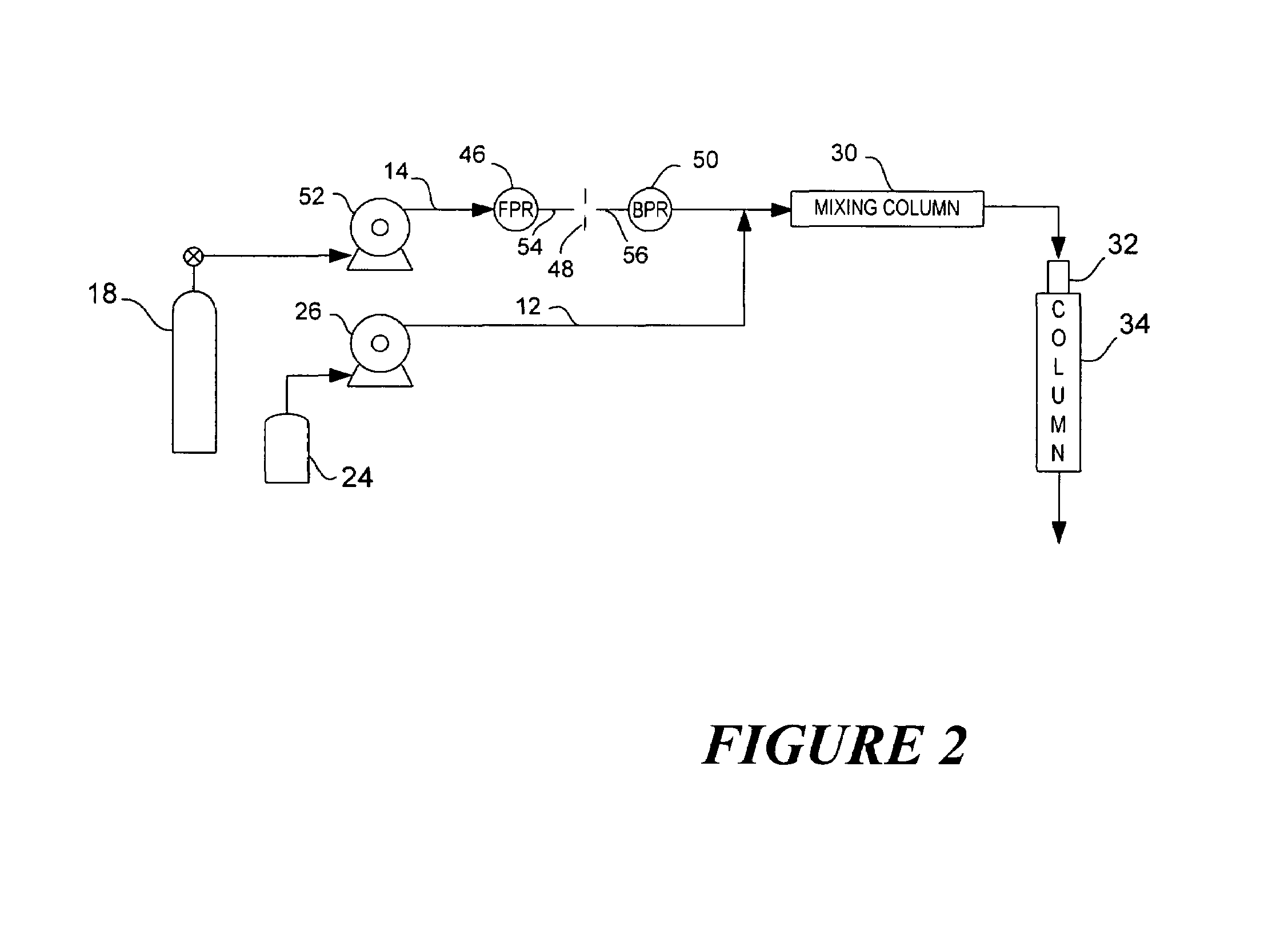Pump as a pressure source for supercritical fluid chromatography
a pressure source and fluid chromatography technology, applied in the direction of positive displacement liquid engine, separation process, instruments, etc., can solve the problems of chromatographic behavior, inability to distinguish from true supercritical operation, and compensation too small to deal with fluids most often used in sfc, so as to reduce oscillation, dampen damaging effects, and increase the volumetric capacity of sfc
- Summary
- Abstract
- Description
- Claims
- Application Information
AI Technical Summary
Benefits of technology
Problems solved by technology
Method used
Image
Examples
Embodiment Construction
[0027]There is described herein a preferred embodiment of the present invention for a device and method in a high-pressure chromatography system, such as supercritical fluid chromatography (SFC), that uses a pump as a pressure source for precision pumping of a compressible fluid. As further described herein, the preferred exemplary embodiment comprises a pressure regulation assembly installed downstream from a compressible fluid pump but prior to combining the compressible flow with a relatively incompressible flow stream. The present invention provides for the replacement of an expensive SFC-grade pump for compressible fluids having dynamic compressibility compensation, with a less-expensive and imprecise pump to move a compressible fluid flow stream in a precise flow rate and pressure signal. The assembly dampens the damaging effects of a low-grade pump, such as large pressure and flow oscillations caused by flow ripples and noisy pressure signals that do not meet precise SFC pump...
PUM
 Login to View More
Login to View More Abstract
Description
Claims
Application Information
 Login to View More
Login to View More - R&D
- Intellectual Property
- Life Sciences
- Materials
- Tech Scout
- Unparalleled Data Quality
- Higher Quality Content
- 60% Fewer Hallucinations
Browse by: Latest US Patents, China's latest patents, Technical Efficacy Thesaurus, Application Domain, Technology Topic, Popular Technical Reports.
© 2025 PatSnap. All rights reserved.Legal|Privacy policy|Modern Slavery Act Transparency Statement|Sitemap|About US| Contact US: help@patsnap.com



